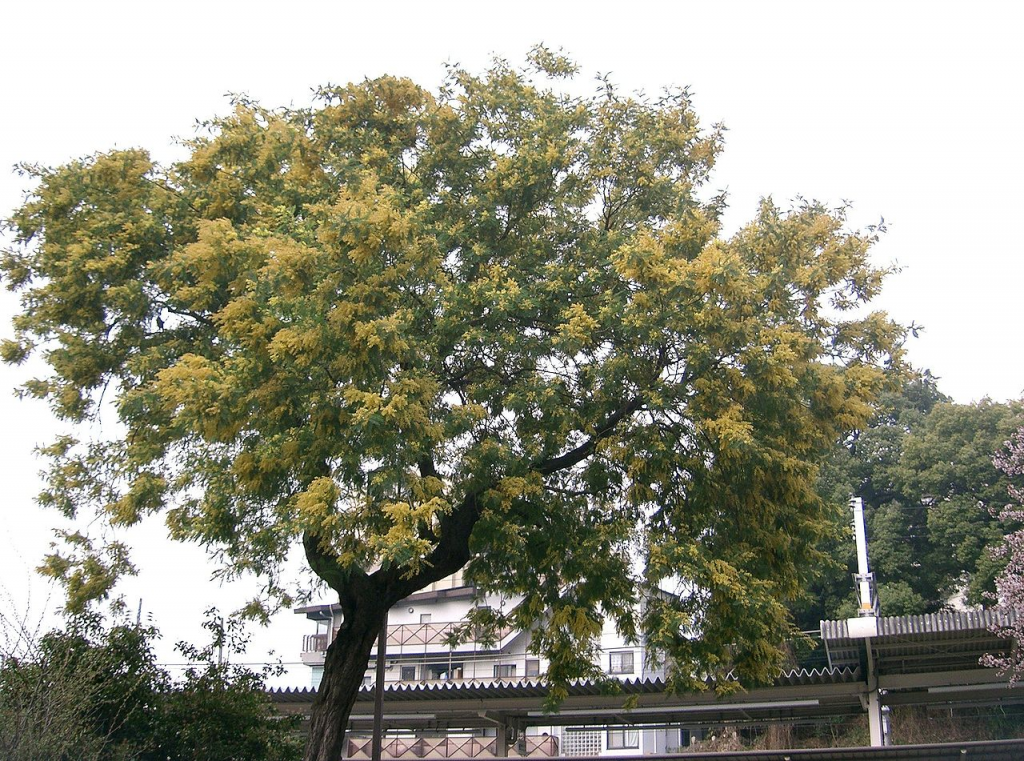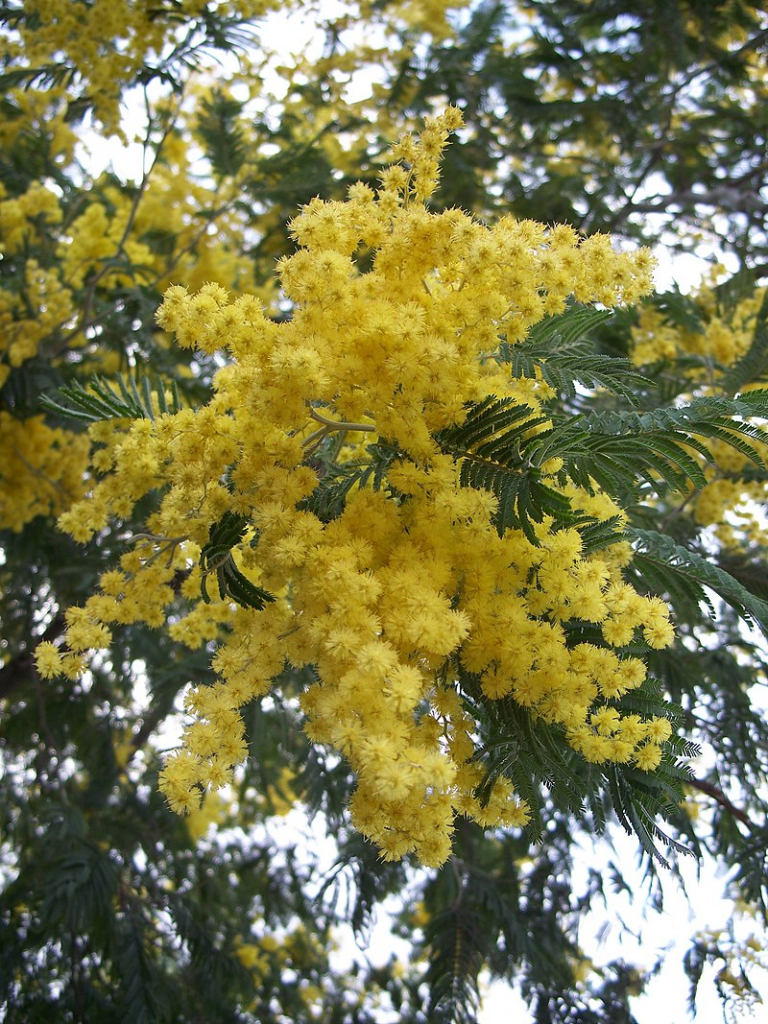
Also called blue wattle and mimosa, this flowering evergreen shrub or small tree is native to southeastern Australia including Victoria, New South Wales, and Tasmania . It is a member of the legume family, Fabaceae, that also includes pea, lupine and alfalfa. The plant grows 40-50′ tall and wide, and has smooth gray-green to dark gray bark that develops fissures with maturity. The fern-like leaves are true leaves. They are up to 5″ long, blue-green to silver gray-green, and bipinnately divided into 6–30 pairs of pinnae, each pinna divided into 10–68 pairs of leaflets. In late winter to spring, large racemes of bright yellow globose flowerheads appear. Each flowerhead is made up of 13–42 flowers and has a strong honey fragrance that attracts bees. The fruit is a flat pod containing several seeds. The roots fix nitrogen and the leaves may be allelopathic and so inhibit the growth of some other plants when they fall. Plants establish quickly but resent being transplanted. When stems are cut or killed by frost resprouting occurs. Silver wattle is valued for native woodland restoration, soil stabilization projects, and shelterbelt plantings and it is a good choice for pollinator, winter, or fragrance gardens. The flowers are grown for the florist industry and the essential oil they contain. The life span of the plant is about 20-30 years and it can become invasive. The genus name, Acacia, comes either from the Greek word akazo meaning to sharpen or from the Egyptian word akakia, a name given to the Egyptian Thorn, Acacia arabica. The specific epithet, dealbata, comes from the Latin word dealbare, meaning “to whiten” and may refer to the silvery leaves or the white lichen that grows on the bark of plants that live in mountainous habitats. Photo Credit: KENPEI, Wikipedia

Type: Flowering broadleaf evergreen shrub or small tree
Outstanding Feature: Fragrant flowers in late winter to early spring
Form: Rounded or conical
Growth Rate: Rapid
Bloom: Large racemes of globose flowerheads consisting of 13-42 bright yellow flowers; in late winter to early spring
Size: 40-50′ H x 40-50′ W
Light: Full sun
Soil: Average, medium moist, well-drained, slightly acidic; drought tolerant once established
Hardiness: Zones 8-10
Care: Prune immediately after flowering to maintain size and/or shape.
Pests and Diseases: None of significance but if grown in a greenhouse may be susceptible to red spider mite, fluted scale, and mealy bugs.
Propagation: Seed (require scarification and soaking in warm water for twelve hours); semi-hardwood cuttings.
Outstanding Selections: None available
Photo Credit: Eugene Selenko, Wikipedia